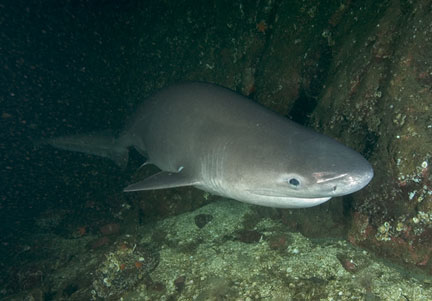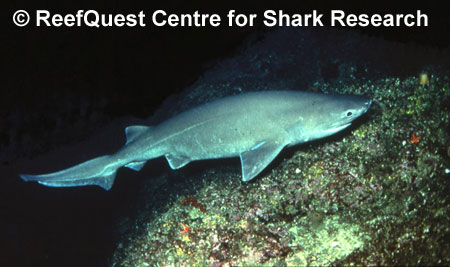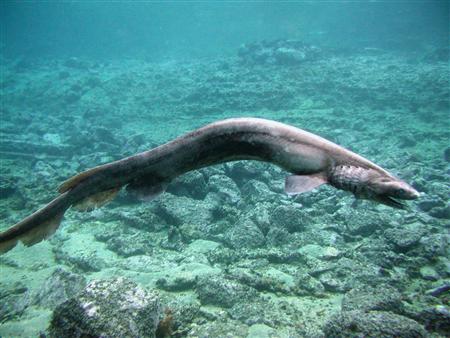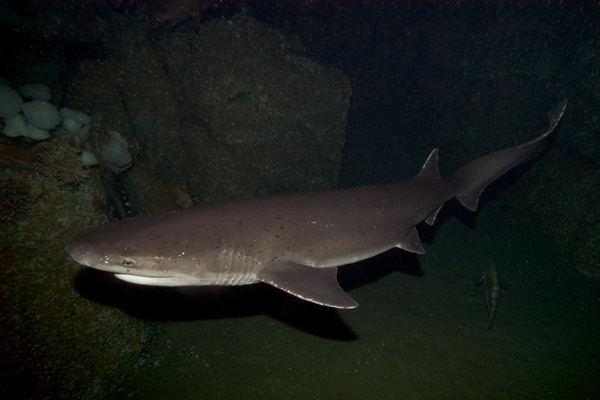
Broadnose Sevengill Shark
Broadnose Sevengill Shark
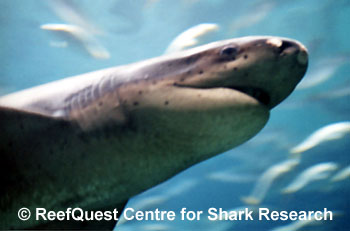
Broadnose Sevengill Shark

Broadnose Sevengill Shark
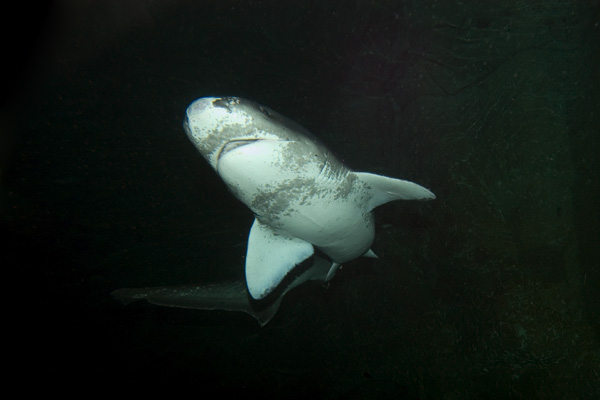
Family: Hexanchidae
Identification: Bluntly rounded snout. Seven gill slits, posterior slits very short. Single dorsal fin set well back on body. Upper body sprinkled with small black spots and usually some white spots. Large size.
Size: At birth 34-45cm. Males mature at 130-170cm. Females mature at 200cm. Maximum recorded size 290cm. May possibly grow to 400cm.
Habitat: Coastal sandy bays and rocky shorelines up to the surf line. Larger individuals inhabit deeper channels. Recorded at 136m but usually found in 1-50m.
Abundance and distribution: Temperate coastal waters around the world. Southern Australia, New Zealand, Japan, Southern Africa, east and west coasts of south South America, and west coast of North America to Alaska.
Behavior and Diet: Cruises steadily along bays in search of food moving in and out with the tides. Prefers low visibility - night, turbid water, overcast conditions. Known to aggregate possibly for mating. Footage from the documentary Shark Quest shows a group of Broadnose Sevengill Sharks feeding together on a stingray carcass. Preys on sharks and rays, bony fishes and marine mammals.
Reproduction: Ovoviviparous (aplacental viviparous). Litter size 67-104. but may be higher. Gestation probably around one year followed by one year of recovery.
Observations: Broadnose Sevengill Sharks have been observed spy hopping - holding their heads above water and seeming to look around. This behavior is rare among sharks but has been regularly observed in Great White Sharks. it is possibly an adaptation to aid in the capture of marine mammals.
Similar species: The Bluntnose Sixgill Shark (Hexanchus griseus) has a very similar body shape but lacks the seventh gill slit and has less or no spots. The Sharpnose Sevengill Shark (Heptranchias perlo) has much larger eyes, a more pointed snout, and flattened, elongated pelvic fins.

